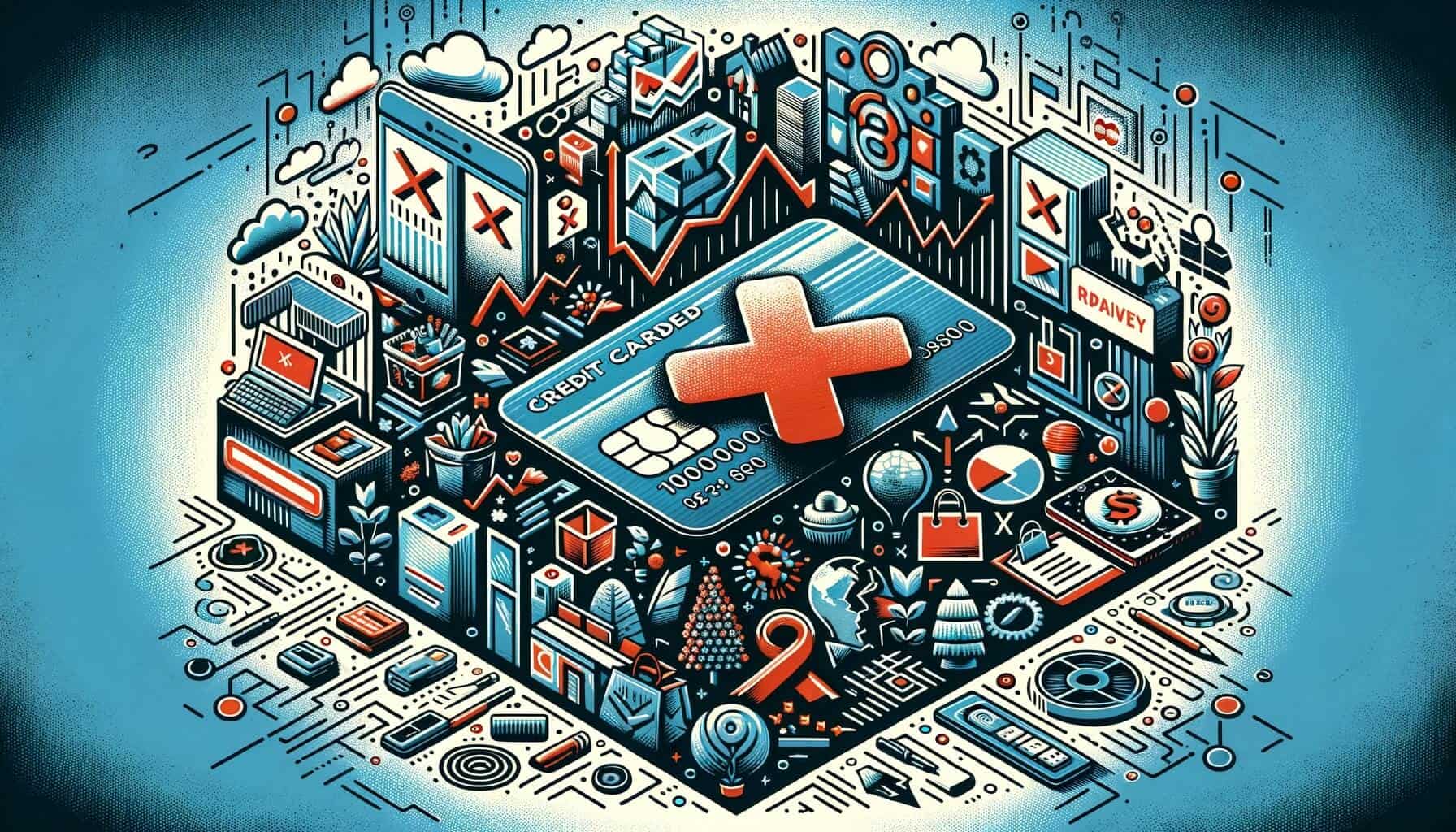
By Harriet Forster January 1, 2025
In today’s digital age, credit card processing has become an integral part of conducting business transactions. However, like any technology, credit card processing systems are not immune to glitches and outages. A credit card processing outage refers to a disruption in the system that prevents businesses from accepting credit card payments. These outages can have a significant impact on businesses, leading to lost sales, frustrated customers, and potential damage to a company’s reputation.
The Impact of Credit Card Processing Outages on Businesses

Credit card processing outages can have severe consequences for businesses of all sizes. The inability to accept credit card payments can result in lost sales and revenue, especially in industries where cash transactions are less common. According to a study conducted by Javelin Strategy & Research, businesses that experience a credit card processing outages can lose an average of $4,700 per minute in sales.
Furthermore, this can also lead to dissatisfied customers. In today’s fast-paced world, consumers expect convenience and efficiency when making purchases. When a business is unable to process credit card payments, customers may become frustrated and choose to take their business elsewhere. This can not only result in immediate revenue loss but also long-term damage to a company’s reputation and customer loyalty.
Identifying the Signs of a Credit Card Processing Outage

Recognizing the signs of a credit card processing outages is crucial for businesses to take immediate action and minimize the impact. Here are some common signs that indicate a credit card processing outage:
1. Inability to process credit card payments: The most obvious sign of a this is the inability to process credit card payments. If multiple attempts to process payments fail, it is likely that there is an issue with the processing system.
2. Error messages or declined transactions: Error messages or declined transactions can also indicate a credit card outages. If customers receive error messages or their transactions are declined without any apparent reason, it is essential to investigate whether there is a system-wide issue.
3. Reports from other businesses: Keeping an eye on industry news and forums can provide valuable insights into potential credit card processing outages. If other businesses in the same industry or region report similar issues, it is likely that there is a widespread problem.
Immediate Steps to Take When Facing a Credit Card Processing Outage

When facing a credit card processing outage, businesses need to act swiftly to minimize the impact on their operations. Here are some immediate steps to take:
1. Contact the payment processor: The first step is to contact the payment processor or merchant services provider to report the issue. They will be able to provide information on the outage and an estimated timeline for resolution.
2. Inform employees: It is crucial to inform all employees about the credit card processing outages and provide them with alternative payment options or procedures. This will ensure that they can assist customers and prevent any confusion or frustration.
3. Display clear signage: Place clear signage at the point of sale and throughout the store, informing customers about the credit card processing outages. This will manage their expectations and provide alternative payment options, such as cash or mobile payment apps.
4. Implement manual processing: If possible, implement manual processing methods to accept credit card payments. This may involve using carbon copy imprinters or manually entering credit card information into a secure system. However, it is essential to ensure compliance with Payment Card Industry Data Security Standard (PCI DSS) guidelines.
5. Keep records: Maintain detailed records of all transactions processed manually during the outage. This will help reconcile accounts once the credit card processing system is back online.
Troubleshooting Tips for Resolving Credit Card Processing Outages

While businesses rely on their payment processors to resolve credit card processing outages, there are some troubleshooting tips that can help expedite the resolution process. Here are some steps to consider:
1. Check internet connectivity: Ensure that the internet connection is stable and functioning correctly. A poor internet connection can cause disruptions in credit card processing systems.
2. Restart the system: Sometimes, a simple system restart can resolve minor glitches or software issues. Restarting the point-of-sale system, payment terminal, or any other devices involved in the credit card processing can help restore functionality.
3. Update software and firmware: Ensure that all software and firmware related to the credit card processing system are up to date. Outdated software can lead to compatibility issues and potential outages.
4. Contact technical support: If the troubleshooting steps mentioned above do not resolve the issue, it is essential to contact technical support for further assistance. They can provide guidance specific to the credit card processing system being used.
Communicating with Customers During a Credit Card Processing Outage
Effective communication with customers during a credit card processing outage is crucial to manage their expectations and maintain customer satisfaction. Here are some tips for communicating with customers:
1. Be transparent: Be honest and transparent with customers about the credit card processing outages. Clearly explain the issue and provide an estimated timeline for resolution. Transparency builds trust and shows customers that you are actively working to resolve the problem.
2. Offer alternative payment options: Provide customers with alternative payment options, such as cash, checks, or mobile payment apps. Clearly communicate these options through signage, verbal communication, or email notifications.
3. Train employees: Train employees on how to handle customer inquiries and provide alternative payment options. Empower them to answer questions confidently and assist customers in finding suitable payment methods.
4. Provide regular updates: Keep customers informed about the progress of the credit card processing outage. Send regular updates via email, social media, or in-store announcements to let them know that you are actively working on resolving the issue.
Preventive Measures to Minimize the Risk of Credit Card Processing Outages
While it is impossible to completely eliminate the risk of credit card processing outages, businesses can take preventive measures to minimize the likelihood and impact of such incidents. Here are some preventive measures to consider:
1. Choose a reliable payment processor: Select a reputable payment processor or merchant services provider with a track record of reliable service. Research their uptime statistics and customer reviews to ensure they have a robust infrastructure.
2. Implement redundancy: Implement redundancy in credit card processing systems by using multiple payment processors or backup systems. This ensures that if one system fails, there is a backup in place to continue processing payments.
3. Regularly update software and hardware: Keep all software and hardware related to credit card processing systems up to date. Regular updates often include security patches and bug fixes that can prevent potential outages.
4. Conduct regular system checks: Perform regular system checks to identify any potential issues or vulnerabilities. This can include testing payment terminals, internet connectivity, and software compatibility.
Alternative Payment Options to Offer During a Credit Card Processing Outage
When facing a credit card processing outage, offering alternative payment options is crucial to ensure that businesses can continue to accept payments. Here are some alternative payment options to consider:
1. Cash: Accepting cash payments is the most straightforward alternative during a credit card processing outage. Ensure that there is sufficient change available and clearly communicate to customers that cash payments are accepted.
2. Checks: Accepting checks can be an alternative for customers who do not have cash on hand. However, it is essential to have a clear policy in place for accepting checks and verify the customer’s identity to minimize the risk of fraudulent transactions.
3. Mobile payment apps: Encourage customers to use mobile payment apps, such as Apple Pay or Google Pay, as an alternative to credit card payments. These apps allow customers to make payments using their smartphones, providing a convenient and secure option.
4. Gift cards or store credit: If applicable, allow customers to use gift cards or store credit as a form of payment during a credit card processing outage. This can help retain customer loyalty and prevent lost sales.
How to Handle Chargebacks and Refunds During a Credit Card Processing Outage
During a credit card processing outage, businesses may face challenges in handling chargebacks and refunds. Here are some steps to handle these situations effectively:
1. Document all transactions: Maintain detailed records of all transactions processed manually during the outage. This includes the customer’s name, contact information, transaction amount, and any supporting documentation.
2. Communicate with customers: If a customer requests a refund or initiates a chargeback, communicate with them promptly and professionally. Explain the situation and provide alternative options for refunding the payment, such as issuing a check or store credit.
3. Follow standard refund procedures: Follow your standard refund procedures for processing refunds during a credit card processing outage. Ensure that all refunds are properly documented and processed in a timely manner.
4. Keep evidence of the outage: Keep evidence of the credit card processing outage, such as communication with the payment processor, outage reports, and any other relevant documentation. This can be useful in case of disputes or chargeback inquiries.
Recovering from a Credit Card Processing Outage: Lessons Learned and Best Practices
Once a credit card processing outage is resolved, it is essential to reflect on the experience and implement best practices to prevent future incidents. Here are some lessons learned and best practices for recovering from a credit card processing outage:
1. Conduct a post-mortem analysis: Analyze the root cause of the credit card processing outage and identify any areas for improvement. This can include reviewing system logs, consulting with technical experts, and gathering feedback from employees and customers.
2. Update contingency plans: Based on the lessons learned, update contingency plans to ensure a more efficient response to future credit card processing outages. This can include revising communication strategies, implementing additional backup systems, or improving employee training.
3. Communicate with customers: After the credit card processing outage is resolved, communicate with customers to thank them for their patience and understanding. This can be done through email newsletters, social media posts, or in-store announcements.
4. Monitor system performance: Continuously monitor the performance of credit card processing systems to identify any potential issues or vulnerabilities. Implement proactive measures, such as regular system checks and software updates, to prevent future outages.
FAQs
Q1. What causes credit card processing outages?
Credit card processing outages can be caused by various factors, including technical glitches, software bugs, network issues, or even cyberattacks.
Q2. How long do credit card processing outages typically last?
The duration of credit card processing outages can vary depending on the cause and the responsiveness of the payment processor. Some outages may be resolved within minutes, while others can last for several hours or even days.
Q3. Can credit card processing outages be prevented?
While it is impossible to completely prevent credit card processing outages, businesses can take proactive measures to minimize the risk. This includes regularly updating software, maintaining a reliable internet connection, and having a backup plan in place for alternative payment methods.
Q4. How can businesses recover from a credit card processing outage?
To recover from a credit card processing outage, businesses should focus on rebuilding customer trust and loyalty. This can be achieved through transparent communication, offering incentives for inconvenience, and providing exceptional customer service.
Conclusion
Credit card processing outages can have a significant impact on businesses, leading to lost sales, frustrated customers, and potential damage to a company’s reputation. By understanding the signs of a credit card processing outage, taking immediate steps to minimize the impact, and implementing preventive measures, businesses can effectively handle these incidents. Offering alternative payment options, communicating with customers, and handling chargebacks and refunds professionally are essential during a credit card processing outage.
Finally, recovering from a credit card processing outage involves analyzing the experience, implementing best practices, and continuously monitoring system performance to prevent future incidents. By following these guidelines, businesses can navigate credit card processing outages with minimal disruption and maintain customer satisfaction.